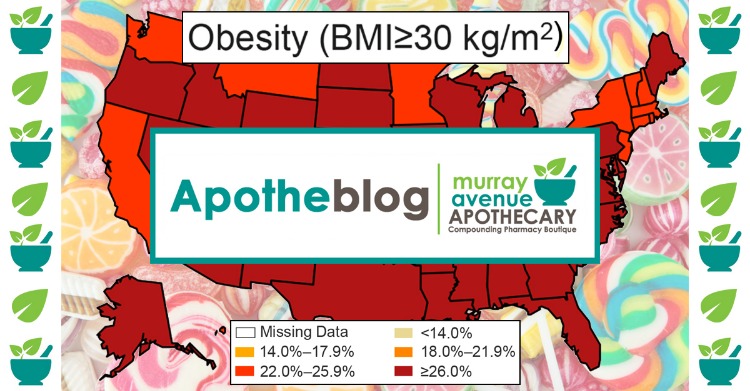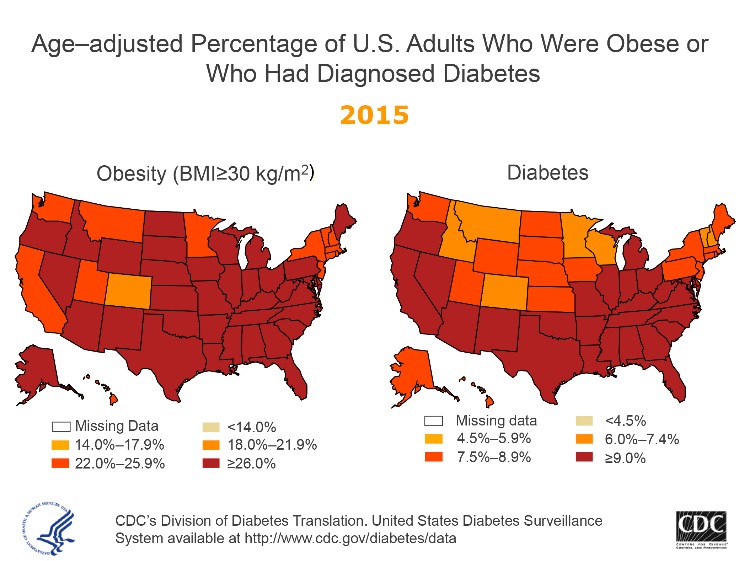Insulin Resistance
May 22, 2018

Insulin Resistance
Dear Friends,
Diabetes is rising at an alarming rate in the United States. Since 1990, the number of people with diabetes has increased by 375%!1 Diabetes is found in people of all ages and ethnicities. In the U.S. alone, there are more than 29 million people with diabetes and roughly 90% of those cases are type 2 diabetes.2 The World Health Organization lists diabetes as 6th leading cause of death in the world.3 Diabetes also increases the risk of cardiovascular disease and stroke which are numbers 1 and 2, respectively, on the World Health Organizations list of Top 10 Causes of Death in 2015.3

The path to type 2 diabetes starts with a syndrome called “Insulin Resistance.” Insulin is a hormone made by the pancreas which helps to control blood sugar (glucose) levels in the body. When blood sugar increases from the digestion of carbohydrates (primarily) beta cells in the pancreas react by creating insulin. The insulin moves the sugars from the blood into cells where it can be used for energy production. This process keeps blood sugar levels within a normal range.
When a person is insulin resistant the cells of the body do not respond properly to insulin and are unable to easily absorb the blood sugar. As a result, the blood sugar levels remain high and the pancreas pumps out even more insulin trying to fix the problem. As long as the beta cells in the pancreas are able to produce enough insulin to overcome this resistance, blood sugar levels remain at normal levels. This, however, further increases the cell’s resistance to the insulin, creating a vicious cycle.
Over time insulin resistance can lead to prediabetes and eventually to type 2 diabetes because the beta cells cannot keep up with the body’s increased need for insulin. Once these beta cells die the body can no longer produce insulin or manage blood sugar effectively. Without enough insulin, excess blood sugar builds up and leads to serious health problems. When blood sugar levels are consistently higher than normal, but not high enough for a diabetes diagnosis it is called “prediabetes.”
Although insulin resistance alone does not cause diabetes it can set the stage for the disease by overworking the beta cells to the point of death. Over time, high blood sugar can damage nerves and blood vessels and lead to complications like heart disease, stroke, blindness, kidney failure, diabetic neuropathy, and lower-limb amputations. Studies have shown that most people with prediabetes develop type 2 diabetes within 10 years unless they change their lifestyle.
There are several signs and symptoms that may indicate that a person is insulin resistant:
- Increased Hunger
- Lethargy and General Fatigue
- Brain Fogginess and Inability to Focus
- High Blood Sugar
- High Triglycerides
- High LDL Cholesterol
- Low HDL Cholesterol
- Weight Gain and Difficulty Losing Weight Due to Increased Insulin
- Increased Waist to Hip Ratio
- High Blood Pressure
- Excessive Thirst and Frequent Urination
The signs and symptoms of insulin resistance are poorly understood and not everyone with insulin resistance may exhibit all or any of these symptoms. The only way to know for sure is to have your insulin levels tested. At Murray Avenue Apothecary we have several options for in-home insulin testing including our Weight Management test kit. By measuring your insulin levels, we can confirm any indications of insulin resistance. If you exhibit any of the above symptoms or have a family history of diabetes we strongly encourage you to get your insulin tested. Other risk factors for insulin resistance and diabetes include obesity, age (over 40), hypertension, excessive alcohol consumption, poor sleep, high stress levels, and a sedentary lifestyle.
Another condition to be aware of is Hyperinsulinemia. Hyperinsulinemia is a condition in which there are excess levels of insulin circulating in the blood relative to the level of blood sugar. Blood sugar levels may appear normal, but this excess insulin can make it more difficult to lose weight and produce many symptoms similar to insulin resistance and can lead to or make insulin resistance worse.
Insulin resistance is caused by excessive blood sugar levels and excessive blood sugar levels are caused by the foods we eat. Excessive carbohydrates and simple sugars like fructose contribute to insulin resistance. High fructose corn syrup is composed of sucrose and glucose which can lead to very high levels of blood sugar.
Fast food meals combined with sugary drinks are the worst culprits creating a ‘perfect storm’ of insulin resistance causing foods; they are rich in sugar, cheap and palatable which increases the chances of overeating, and contain unhealthy fats. They also contain low levels of fiber and omega-3s which have been shown to combat high blood sugar.
The quality of the calories you eat matters. 100 calories of cookies are not same as 100 calories of kale. The resulting blood sugar levels and therefore the insulin levels are very different. Insulin stimulating foods like glucose are more fattening than non-insulin stimulating foods. Dr. James Fung, the author of my new favorite and highly recommended book, The Diabetes Code, lists these rules for what to eat and what to avoid:
- Avoid Added Sugars – causes insulin resistance and high insulin
- Eat Fewer Refined Grains – white, carb-filled foods like bread, rice, pasta, and potatoes are broken down into sugars and increase the need for insulin
- Eat Real Unprocessed Foods without extra sugar and more fiber – decreasing the need for insulin
- Moderate Protein – excessive consumption can be fattening due to the body changing it to glucose (sugar)
- Don’t Be Afraid of Natural Fats – walnuts, avocados, and flax and coconut oils have low insulin effects and may even combat insulin resistance
Beans, berries (in moderation), cruciferous vegetables, greens, raw nuts and seeds, lean protein, and whole grains are all excellent choices to improve your diet. Complete diet guidelines and nutritional consults are available at Murray Avenue Apothecary.
Dr. Fung also stresses when to eat. Most Americans eat all day. Grazing and snacking throughout the day never gives the body a chance to normalize blood sugar and subsequently insulin levels. The best solution to this problem is a daily period of fasting. Intermittent or daily fasting is a more natural way for people to eat. If you eat dinner at 7pm try eating your first meal at noon. Always check with your doctor before starting any new fasting regimen. Fasting gives the body a chance to burn excess calories stored as glycogen which ultimately becomes fat and provides a much-needed respite from managing blood sugar, decreasing the need for excess insulin.
At the Apothecary we also carry several supplements that may help to control blood sugar and insulin resistance. One is called Sugar Manager and it contains:
- Alpha-lipoic acid: 300 mg a day or more can improve insulin sensitivity and diabetic neuropathy, as well as the slow progression of kidney damage
- Chromium: many studies show that 200 mcg or more per day improves glucose tolerance. Chromium may also improve lipid levels.
- Cinnamon: the inclusion of cinnamon in the diet of people with type 2 diabetes can improve hemoglobin A1C levels and reduce risk factors associated with diabetes and cardiovascular disease.
- Green Tea: contains epigallocatechin gallate which reduces oxidative damage by suppressing cytokine induced pancreatic beta-cell damage. Studies in diabetic rats show that green tea also protects the kidneys.
- Gymnema sylvestre: is an herb that has been used to treat type 1 and 2 diabetes for 2,000 years. Gymnema may enhance insulin sensitivity and increase insulin secretion by regenerating beta cells in the pancreas. It reduces levels of blood glucose and impairs ability to taste sweets, which helps people with low carb diets manage their sugar cravings. Some practitioners prefer an herbal extract standardized to 25% gymnemic acids.
- L-Taurine: In red blood cells, Taurine has been shown to prevent oxidative damage caused by high glucose levels. Taurine may prevent lipid peroxidation and the formation of glycated protein. Taurine works well with NAC (N-acetyl cysteine) and it protects the kidneys from cell death due to hyperglycemia. Taurine also enhances the usage of magnesium in the body.
- Other vitamins such as B6, B12, and biotin: may be helpful to improve insulin sensitivity, reduce neuropathy, improve microcirculation, and reduce homocysteine.
- Vanadyl sulfate: may be used to reduce activate insulin receptors and reduce insulin resistance.
Magnesium is an important mineral for insulin and blood sugar control. Magnesium is necessary for both the action of insulin and the manufacture of insulin. When otherwise healthy people are on magnesium-deficient diets, their insulin becomes less effective at getting blood sugar into cells. A decrease of magnesium in cells increases insulin resistance and without magnesium the pancreas decreases insulin production.
Other supplements that may help include vitamin D, omega-3s, and Mega Defense, an immune support supplement that may help strengthen the immune system when it is over taxed by consistently high blood sugar or diabetes.
Another helpful lifestyle change for decreasing insulin resistance is exercise. Studies show that after exercising muscles become more sensitive to insulin. Exercise also helps the muscles absorb more blood sugar without any insulin at all. The more muscle a body has the more easily is can control blood sugar and insulin levels. The Diabetes Prevention Program (DPP), a federally funded study of over 3,200 people, found prediabetes can be prevented or delayed by losing a modest amount of weight and increasing physical activity. Walking 30 minutes a day, 5 days a week is a great start. Cardio and strength training are also important to increase heart rate, build muscle, and maintain overall health.
Insulin resistance is becoming a bigger and bigger problem in this country as the waistlines of our population continues to grow. Over 70% of Americans age 20 and over are overweight and almost 38% of Americans age 20 and over are obese.14 Implementing the simple steps outlined in this article of eating better and exercising you can dramatically reduce your risk of developing a more serious condition like diabetes, heart disease, and stroke.
For further reading, I highly suggest Dr. Fung’s new book The Diabetes Code.
After reading this book, I took action! I had my insulin and glucose levels tested, as well as my lipid levels. The results showed elevated triglycerides, “normal” glucose, but very low insulin suggesting pancreatic dysfunction. I have since eliminated all sources of excess carbohydrates, started walking daily, and have been paying attention to how, when, and why I eat. I needed this kick in the butt and I can help kick yours too!
PS Watch for updates on my personal journey to better health!
To your health,
Susan


